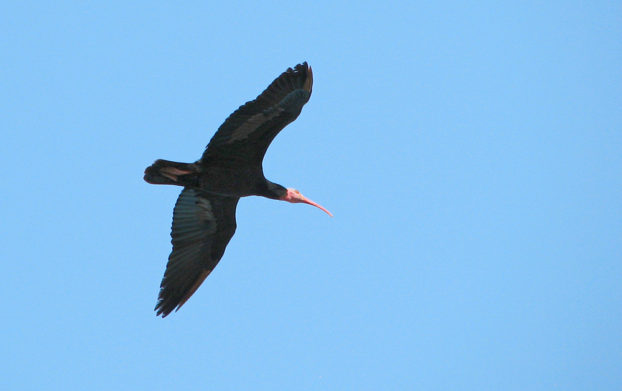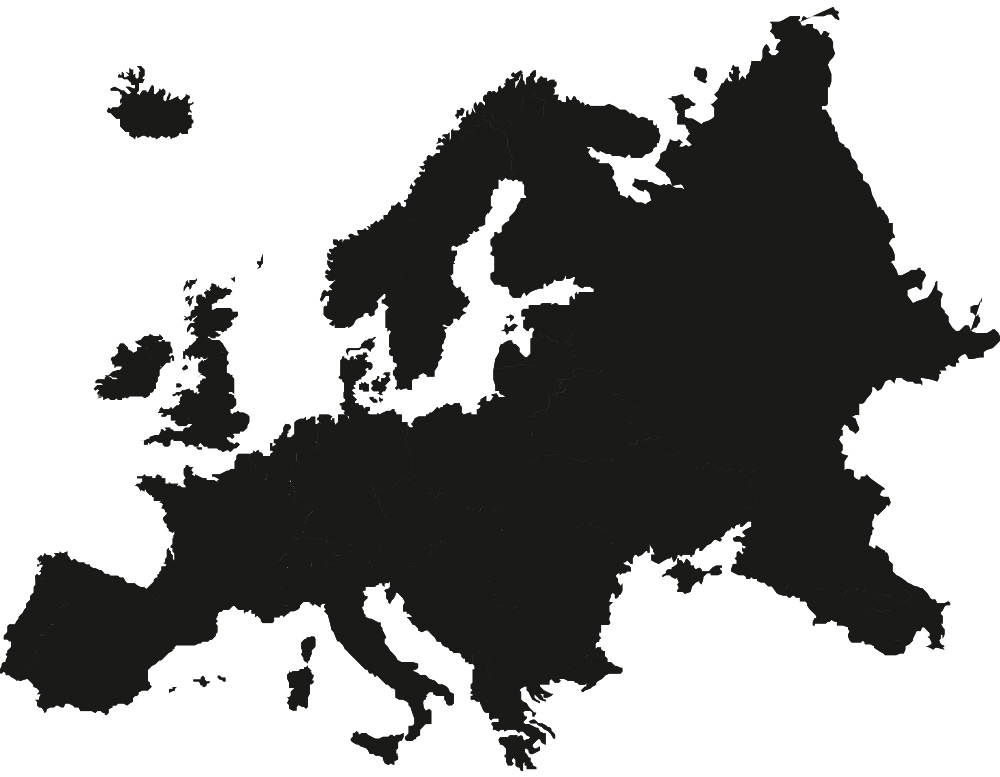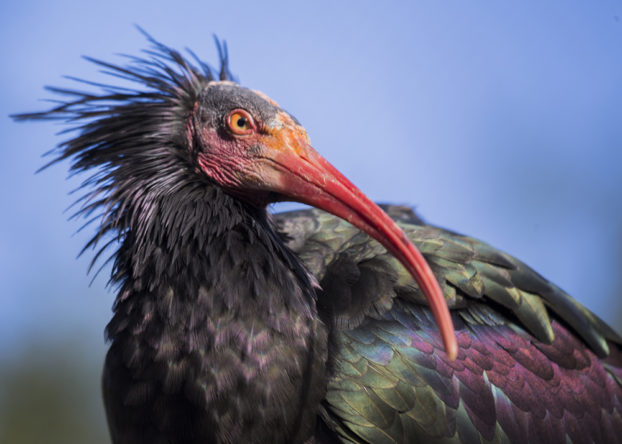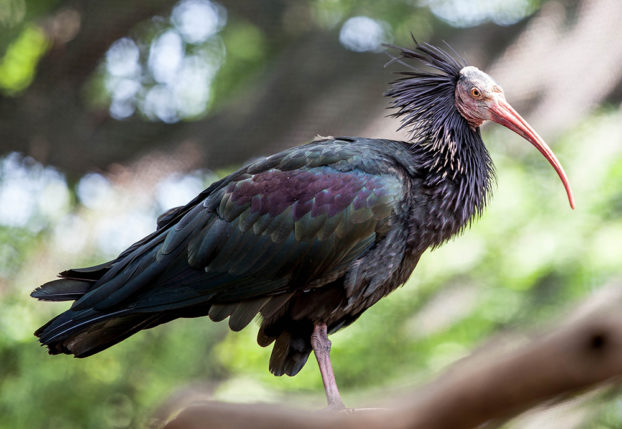NOWADAYS, THERE ARE MANY EFFORTS TO RESETTLE THE SPECIES IN ORDER TO RE-ESTABLISH IT AS A BREEDING BIRD IN EUROPE

Wild Bald Ibis 
Fascinating and irreplaceable: bird species such as the steppe eagle, the Rüppel’s vulture and the great knot are one of a kind – but they may soon disappear if we don’t take action now: on the 2015 Red List for Birds, BirdLife International stated that population numbers are dwindling at a faster rate than they were just one year earlier. ZEISS has pledged to be a Red Listing Sponsor in the interests of conserving bird species diversity.
Seasoned birdwatchers quickly get into a flutter on account of the northern bald ibis; to non-experts at least, it is considered a less-attractive bird and has been extinct in central Europe since the 17th century. It is the size of a goose, has a red head free of feathers and a black crown, making this very gregarious bird hard to miss.

Bald Ibis – a threatened bird species
Its fate is symptomatic of many bird species: it was widespread in central Europe for quite some time – until it fell prey to intensive hunting, that is. Today it lives in the wild, and almost exclusively in Morocco. In Syria, its population has continued to sharply decline over the last 30 years, and habitat conservation there is not currently feasible.
The Ancient Egyptians considered the northern bald ibis a bringer of light, and in Islam it is a symbol of good fortune, said to have shown Noah the way to the fertile valley of the Euphrates after the Flood. In the Orient, people even believed that the bird carried off the souls of the deceased. Sadly, there were no myths to protect this distinctive bird in Europe: it became the target of many a trophy hunter and, back in Medieval times, the young birds were actually considered a delicacy.
Nowadays, there are many efforts to resettle the species in order to re-establish it as a breeding bird in Europe. Typically, it is not individual pairs that breed as breeding is a practice associated with colonies. The northern bald ibis usually lives with anything from several dozens to a hundred other birds and breeds once a year. Males and females are both involved in building the nest. Another challenge to reintroducing the birds into the wild is that the northern bald ibis, a migratory bird, is taught the flight path in its first year by its parents.
When it comes to reintroducing birds into the wild that have been living in a zoo, their human foster parents sometimes fly ahead of them in light aircraft – this, however, does not have quite the same effect.
The northern bald ibis is recognized as an endangered species around the world. This is in contrast to the partridge, which is ranked as a Bird of Least Concern on the Red List. In spite of this, its European population is ranked as Vulnerable. The population has been in sharp decline since 1970 because its natural habitats have been transformed into consolidated land and farmlands.
RED LIST: THE AIM IS STILL TO RAISE PUBLIC AWARENESS ABOUT THE FATE OF INDIVIDUAL SPECIES AND COME UP WITH CONCRETE WAYS TO PRESERVE THEIR NATURAL HABITATS.

Today, the list of endangered bird species is very long; the term mass extinction has even been bandied about. So how do we respond to this phenomenon – and how can we combat it? More than 50 years ago, the two well-known conservationists Sir Peter Scott and Bernhard Grzimek published the first edition of the Red List of Threatened Species: back then, it included 312 bird and 211 mammal species.
These days, the aim is still to raise public awareness about the fate of individual species and come up with concrete ways to preserve their natural habitats. The Red List now includes several thousand species, including plants.
The fact that the focus has been on bird species from the very beginning is due primarily to the commitment shown by BirdLife International. Established under a different name in 1922, BirdLife is the global parent organization for national conservation organizations that focus on bird protection. One of its core ways of determining the endangered status of individual bird species is research. BirdLife uses this tool to define conservation programs in the form of so-called Important Bird Areas; these are managed above all by national associations and used for both political purposes and for public relations work.
BirdLife has evaluated 10,000 bird species around the world and works with its member associations to manage 12,000 Important Bird Areas with the aim of protecting the habitats of endangered birds. The intensive basic scientific research to determine the endangered status of bird species helps consolidate the Red List, which is coordinated by the International Union for Conservation of Nature and Natural Resources (IUCN) and covers all plant and animal species. For years, the northern bald ibis has been very high on the list of endangered animals in need of protection.
BirdLife International and ZEISS in Joint Effort to Preserve Species Diversity
The scientists at BirdLife International assess how likely it is that individual bird species will become extinct in the near future. Their predictions are based on observations or estimations made with regard to population decline over a ten-year period, or over three generations.
ZEISS funds scientific surveys conducted by BirdLife in order to define the measures needed to protect natural habitats and to raise awareness about the threats facing the various species.
IUCN threatened categories:
Visit http://www.iucnredlist.org and search for the Latin bird species to find out its endangered status. Use the following terms to do so:
EX = Extinct
EW = Extinct in the Wild
RE = Regionally Extinct
CR = Critically Endangered
EN = Endangered
VU = Vulnerable
NT = Near Threatened
LC = Least Concern
DD = Data Deficient
NE = Not Evaluated